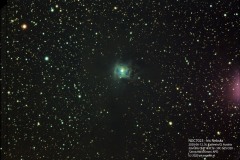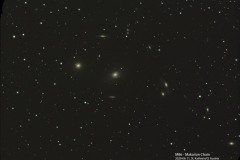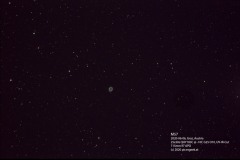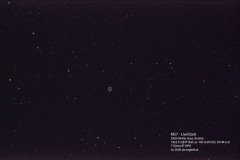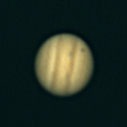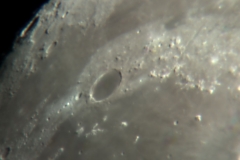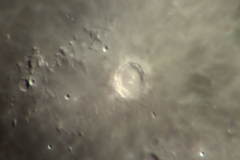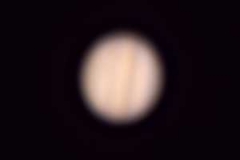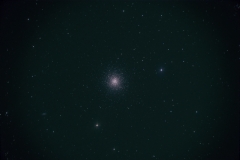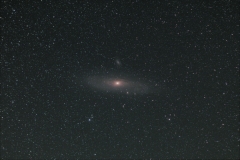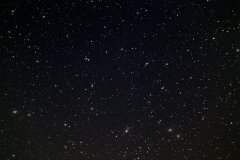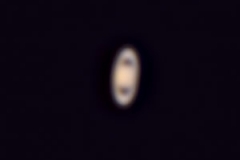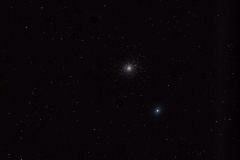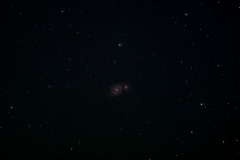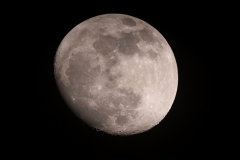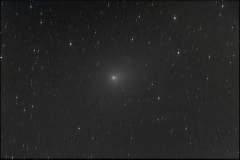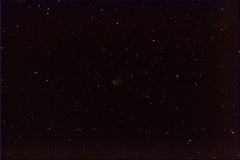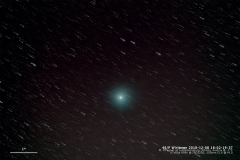Last night I could capture a few light frames of M27. The 3 individual small narrow filtered images were combined in Hubble-Palette colorization
Makarian Chain and Iris Nebula
M57 LiveStack vs longer exposures
Found my planetary camera and tested on Moon
As the nights are really short right now, I set up my scope at home and took a look at the moon. Seeing was not too good, but in moderate magnification, the moon still was pleasant to look at. So I thought, I did not shoot the Moon or the planets for a while. Why not give it a shot? I took my my planetary camera which was stored in their box for more than 2 years and set up for imaging…
For the “first” results, I am really pleased. Now I think I have to optimize and go for it again soon 🙂
Image properties:
102mm f7 APO, ASI120MM-S, RGB+IR Filters
Copernicus: 10% of approximately 5000 frames
Plato: 10% of approximately 11000 frames
A splendid night out in the countryside
Last night I spent near my home town – a short 25 minutes drive – to a place I frequently used years back for astronomy. It is a quite dark spot, though the light pollution is still obvious. Nevertheless I tried to go for some deep sky objects, getting as much observation / camera time as possible in the short nights of June.
My list of objects was not too short. All of them were well placed in the sky and really nice to see :-). So here you go:
1) Hercules cluster M13 (Sony A99ii, 800mm f4, 2xTC, 27x120s, ISO3200)
2) Virgo galaxies M60, M87, M90, M100 (Sony A6000mod, 70-200mmf2.8 @ 200mm f4.5, 22x300s, ISO3200)
3) Virgo galaxy M90 – though I intended M87 😉
4) Whirlpool galaxy M51 (Sony A99ii, 800mm f4, 2xTC, 6x360s, ISO3200)
5) Andromeda galaxy M31 (Sony A6000mod, 70-200mm f2.8 @ 200mm f4.5, 5x30s, ISO3200) – I made an error in exposure time, so instead of 5×300 I ended up with 5x30s 🙁
6) Jupiter (I did not pack my planetary imaging camera – so I used the same setup with Sony A99ii and 800mm scope at 1600mm)
7) Saturn (same as Jupiter)
And far too late (at 01:30) I set up my timelapse camera for a night-to-day movie. The milkyway was beautifully placed just above the pasture. The resulting video clip is below.
Star cluster M5 from the city
Finally a couple of cloud free evenings are here! So lets see, what is to see from the city…
From a balcony facing south across a city, there usually is not too much to expect. This time, I chose the star cluster M5, which is quite bright an was not too hard to see in the scope. Sure, it does not hold to a darker spot away from light polluted city skies. But hey, there is still a lot to see:
Image properties: 75x 40s, 800mm f/4, Sony A99ii @ ISO 1600
A small telescope meeting
After the completely washed away telescope meeting in the beginning of May, I tried to meet up with a few enthusiasts with quite promising weather prospects. Unfortunately the cloud cover did not vanish all the way. Even though there was quite a lot of clouds passing over, I could manage to snap some light frames from M51 – the Whirlpool Galaxy.
Image properties: 16x 180s, 714mm f/7, Alpha 6000 modified
It was fun chatting and also delicious being hosted with creole food 🙂 which compensates for almost any cloudy night!
Comets during full moon
After 2 weeks of thick cloud coverage, I had the chance to spend the evening at the observatory. Actually I jumped in to hold the guided tour this evening…
As there was almost full moon and some cloud coverage (which got steadily thinner) I played a bit around with the setup. I thought – deep sky at full moon is a waste of time. But how about the comets 46/P Wirtanen and 38/P Stephan-Oterma? How brigth are the comets still? Would they shine through the moon lit sky?
Well… I could not make out Stephen-Oterma. But Wirtanen was barely (in)visible. I had some other tasks to do, so I attached the camera to the scope and let it run to see, what may be gathered under these conditions.
Despite of the Moon and the corona of Moon, a little bit of the comets was still possible to process from 90 minutes of total exposure time each:
Comet 46/P Wirtanen travelling through space
The following timelapses show, how much angular distance the comet 46/P Wirtanen makes, when closest to earth. From my data I see approximately a stunning 1° during 4 hours!
Timelapse 1:
85mm photo lens with 1.5x crop sensor
93 exposures, each 60 seconds long (93 min total)
Timelapse 2:
200mm photo lens with full frame sensor
160 exposures, each 90 seconds long (240 min total)
Timelapse 3:
715mm/f7 APO with 1.5x crop sensor
71 exposures, 30 and 60 seconds over 80 min
2018-12-08 Comet 46/P Wirtanen comes closer
After several days with clouds, there has finally been a window of a few hours with stars visible. Unfortunately I had no chance to reach acceptable dark skies. So I had to deal with a more or less 5.5mag sky and some clouds passing by in eastern Austria. This image shows a bit more detail of Comet 46/P Wirtanen, as I used a 200mm telephoto lens. The result is not yet the image I am looking for. So I hope that clouds will clear up the next days for a better and longer imaging session…



